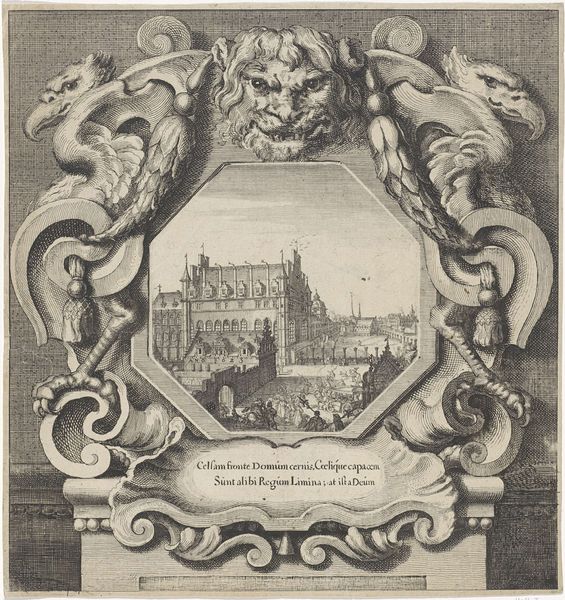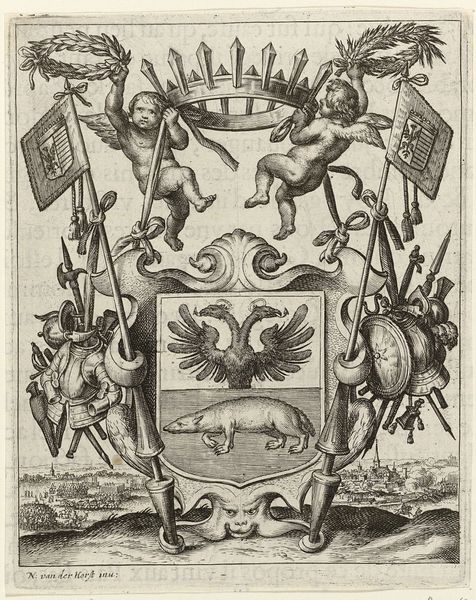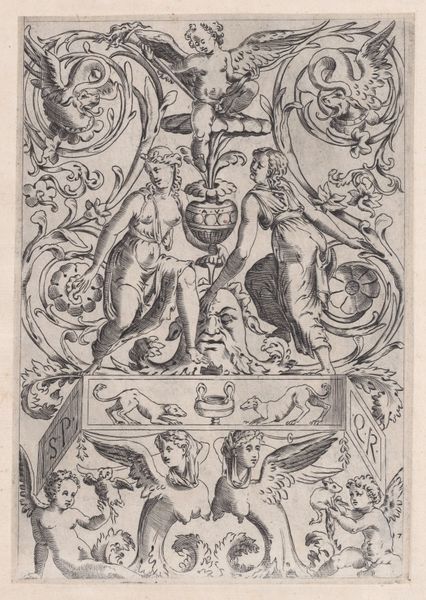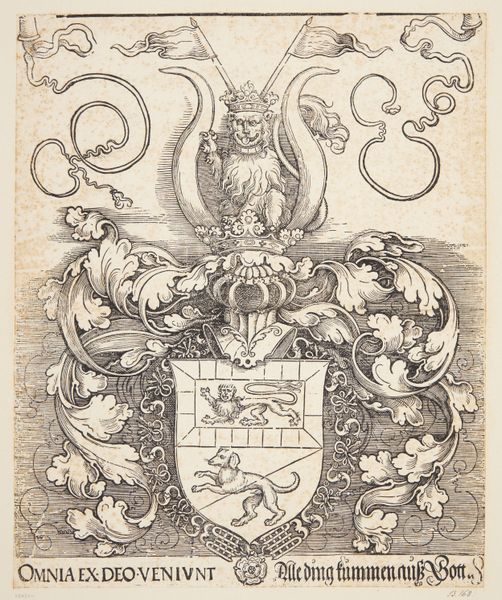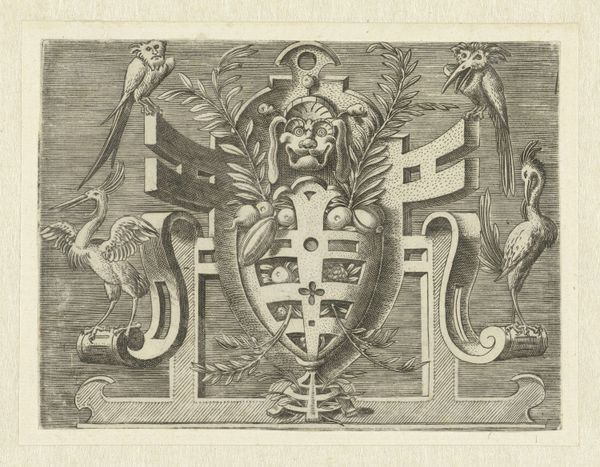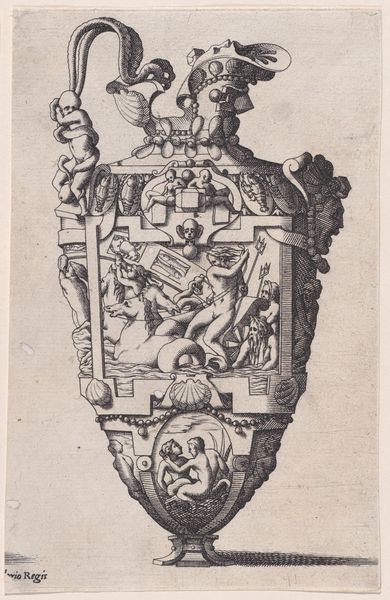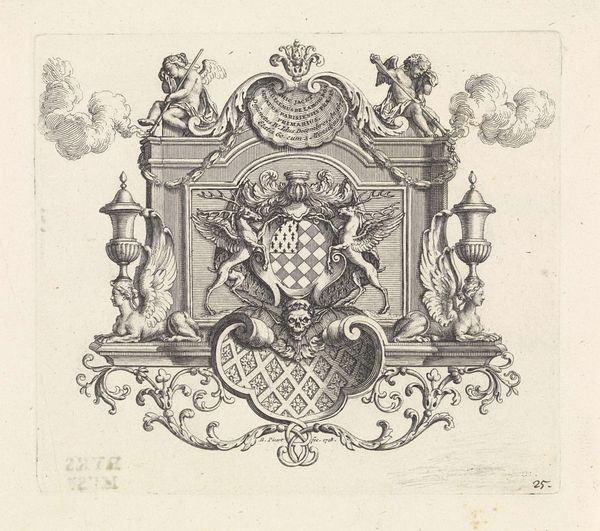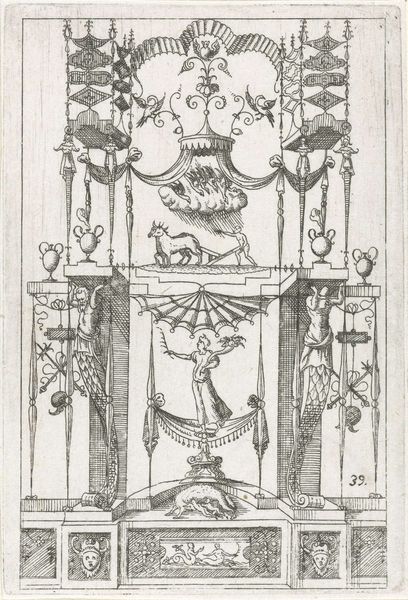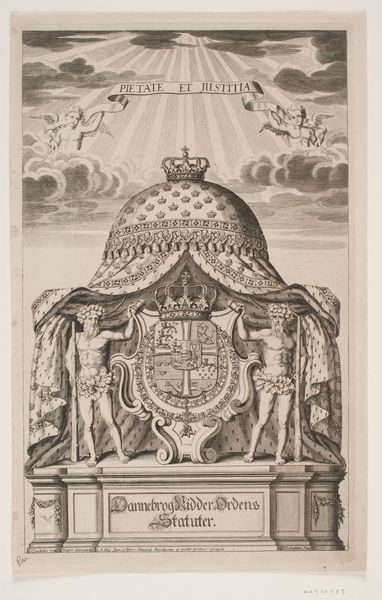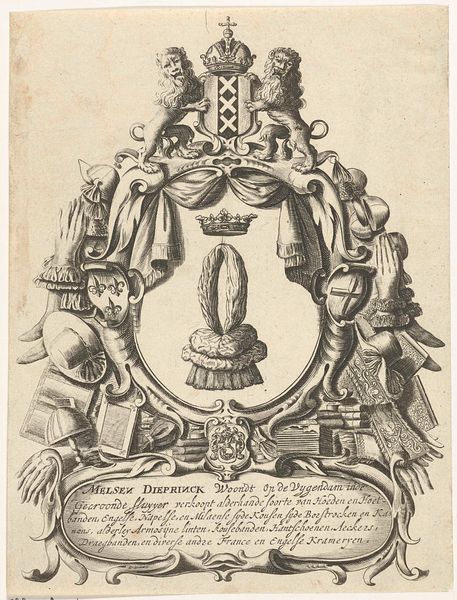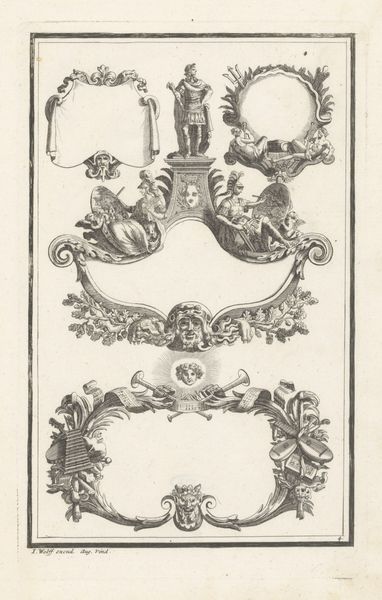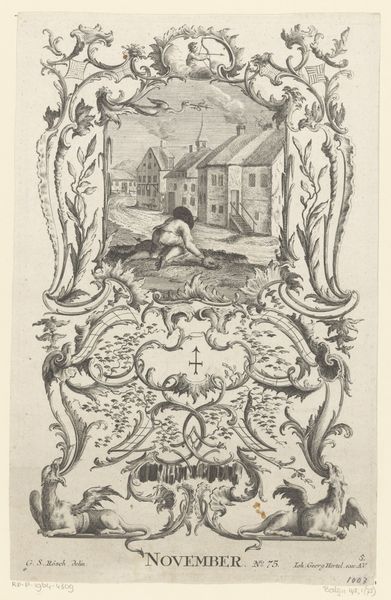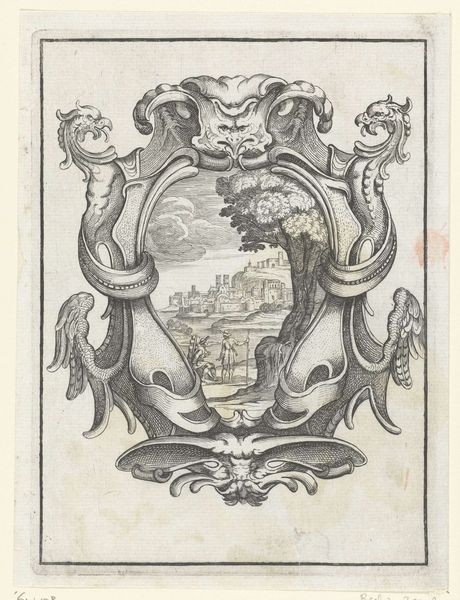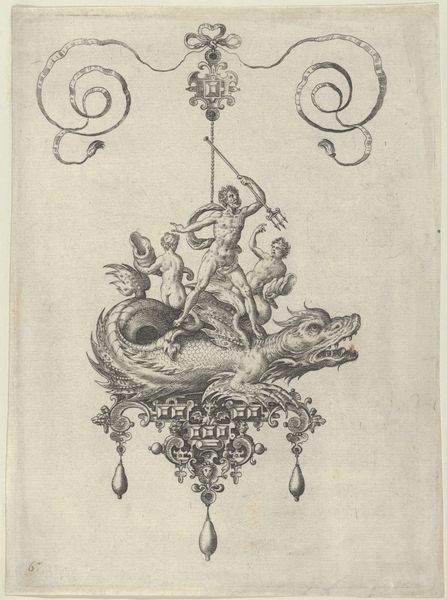
Kasteel met twee leeuwen in een omlijsting van twee lauwertakken, twee vogels en een kroon 17th century
0:00
0:00
drawing, print, ink, engraving, architecture
#
drawing
#
baroque
#
pen drawing
# print
#
old engraving style
#
bird
#
ink
#
line
#
cityscape
#
engraving
#
architecture
Dimensions: height 166 mm, width 127 mm
Copyright: Rijks Museum: Open Domain
Editor: This engraving from the 17th century, titled "Kasteel met twee leeuwen in een omlijsting van twee lauwertakken, twee vogels en een kroon," depicts a castle framed by lions, birds, laurel, and a crown. The crisp lines give it a very formal, almost heraldic feel. What strikes you about this piece? Curator: I find the focus on the engraving process itself particularly compelling. Consider the social context: prints like these circulated widely. They were reproducible and affordable. How does that democratisation of imagery affect our understanding of power structures represented within the image like castles, lions and crowns? Editor: That's interesting – the tension between the aristocratic symbolism and the mass-produced nature of the print. I hadn't thought of that. Curator: Exactly. Think also about the labor involved in producing these engravings. Skilled artisans painstakingly etched these lines into metal plates, reversing images, working almost like factory assembly. That labor is then further multiplied via the press. Does knowing all of this, the “who, how, and why” influence how we evaluate artistic skill and what constitutes artistic value here? Editor: So, you’re suggesting that we shouldn't just see the castle and symbols of power but also the system of production that allowed this image to spread. Curator: Precisely. The engraving prompts us to analyze the materiality of art making. It blurs the traditional lines between "high art" and "craft," which is so fascinating in that period! What are the political implications of an art form making imagery available beyond the elites, as printmakers became critical witnesses of their moment. Editor: That's given me a totally new way of thinking about prints. Seeing it as part of a much wider production system definitely challenges what I thought I knew. Thanks! Curator: My pleasure! It's about moving past admiring the image, to recognizing the art as evidence and social history.
Comments
No comments
Be the first to comment and join the conversation on the ultimate creative platform.
